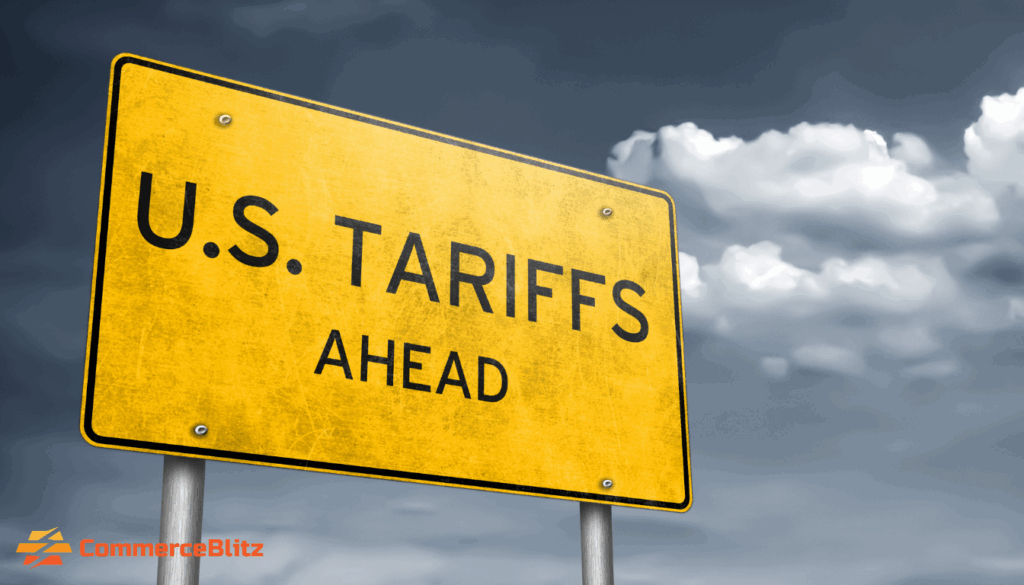The Canada Staging Strategy: How Top Amazon Sellers Are Using Section 321 to Bypass U.S. Tariffs and Maximize Cash Flow
As global trade tensions rise and U.S. import tariffs continue to impact profit margins, top Amazon sellers are deploying creative cross-border fulfillment strategies. One of the most effective and scalable methods involves staging inventory in Canada and leveraging Section 321 exemptions to fulfill U.S. eCommerce orders without incurring import duties.
This whitepaper explores how one of Amazon’s top 10 sellers is navigating the tariff crisis, saving tens of millions by combining Canadian warehousing, tariff recovery, and micro-shipping to U.S. customers — all while maintaining compliance and flexibility in the face of changing trade policy.
The Problem: Tariffs Are Eroding eCommerce Margins
In recent years, tariffs on imported goods — particularly from China — have surged, with rates reaching 22% or more in some categories. For high-volume Amazon sellers, these costs aren’t just inconvenient — they’re existential.
Bulk import strategies into the U.S. expose sellers to:
- Large upfront duty payments
- Inflexibility in reacting to policy changes
- Cash flow constraints that weaken competitive positioning
Conventional Options: Why They Fall Short
1. U.S. Bonded Warehouses
- Storage Fees: $45–$65 per pallet position
- Limitations: Not viable for small parcel shipments
- Use Case: Best for B2B or bulk restocking — not direct-to-consumer
2. Free Trade Zones (FTZs)
- Setup Time: 6 to 8 months
- Tariff Lock-In: You’re committed to current rates (like a fixed mortgage)
- Lacks Agility: Can’t capitalize on changing trade conditions
The Solution: Canada as a Cross-Border Staging Ground
Top eCommerce brands are now shipping inventory to Canadian warehouses, treating Canada as a temporary holding point, not a final destination. This creates two key advantages:
1. Tariff Recovery in Canada
Though Canadian customs may initially charge a 22% duty, sellers can recover these fees because the goods are not consumed or sold in Canada.
2. Duty-Free U.S. Fulfillment via Section 321
U.S.-bound orders are shipped individually from Canada to American customers using Section 321 (de minimis entry), which allows imports under $800 in value to enter duty-free per recipient, per day.

How It Works: The Canada 321 Fulfillment Flow
- Ship full container loads (FCL) or pallets into Canada
- Store in third-party Canadian warehouse
- File for tariff recovery or refund
- Fulfill U.S. customer orders using Section 321 via courier or consolidated entry
- Avoid U.S. duties entirely on qualified shipments
The Benefits
✅ Immediate Cost Savings
- Bypass 10–25% U.S. tariffs on every shipment under $800
✅ Improved Cash Flow
- Delay duty payments and reclaim Canadian duties quickly
✅ Flexibility Amid Policy Shifts
- Import into the U.S. only as needed — wait out trade fluctuations
✅ Scalability for Amazon, Shopify, and DTC Brands
- Ideal for high-frequency, low-unit-value shipments
✅ New Capacity Available
- A recent exit by a major Amazon aggregator opened up 30,000 pallet positions in Canadian warehouses, offering unprecedented access
Compliance Considerations
Section 321 shipments must:
- Be under $800 in value per shipment, per U.S. recipient per day
- Be manifested correctly with product-level detail
- Avoid commingled inventory in bulk loads
Many sellers partner with logistics providers that specialize in Type 86 electronic entry filing, allowing fast, customs-compliant bulk submission of low-value orders.
Conclusion
As trade environments shift, the ability to pivot inventory strategies is becoming a defining advantage for global eCommerce leaders. The Canada 321 model provides the perfect balance of:
- Tariff minimization
- Operational flexibility
- Fulfillment speed
For high-volume sellers on Amazon and beyond, the path to protecting margins now runs through Canada.